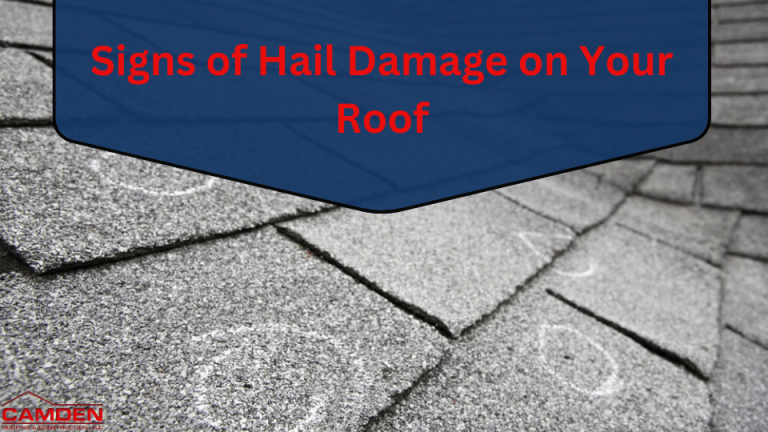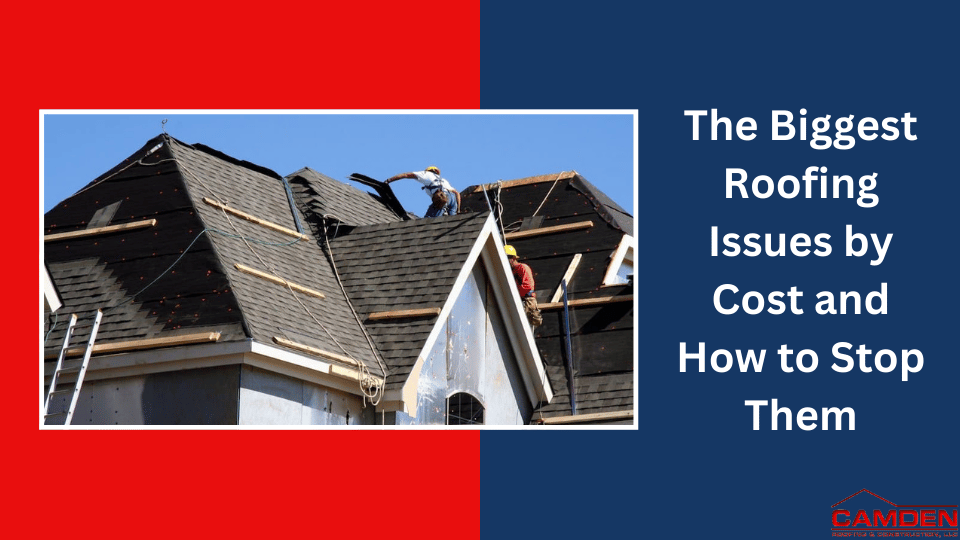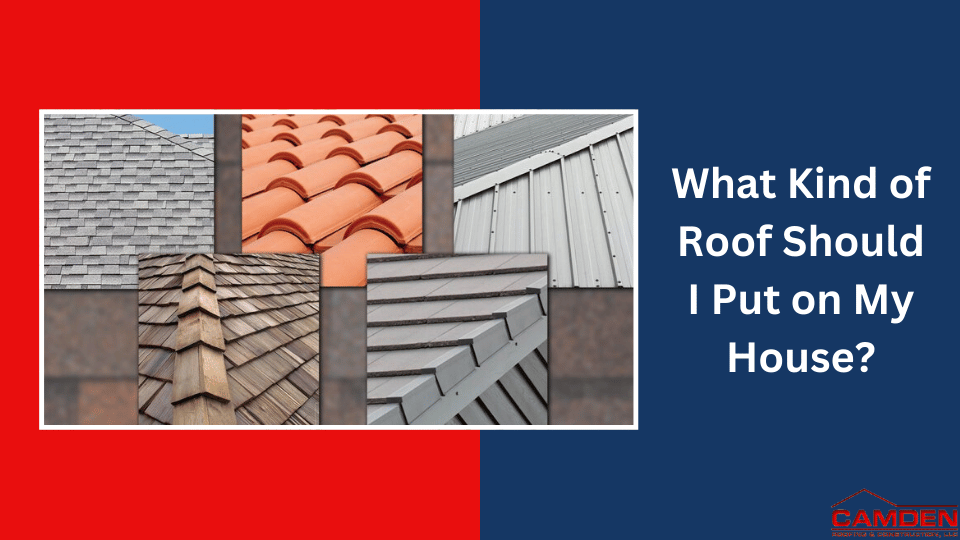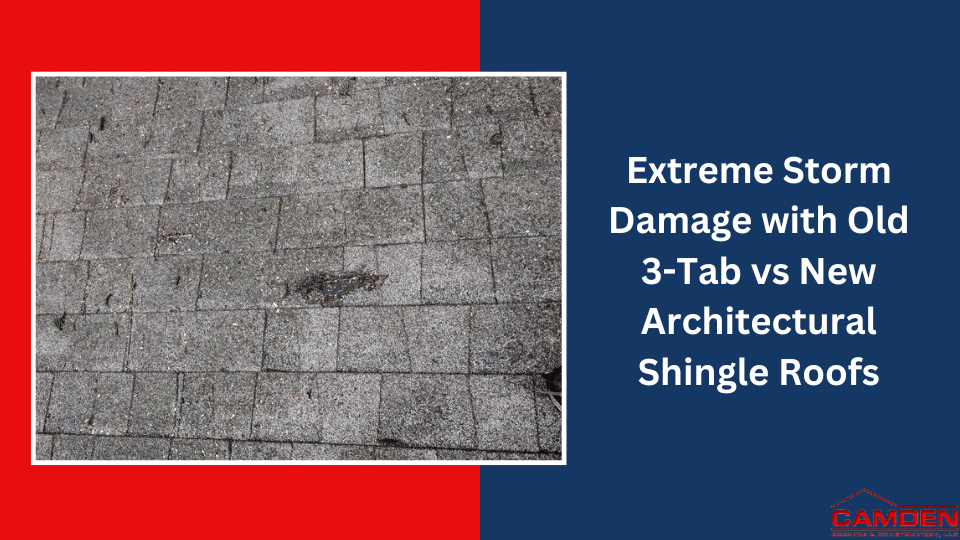Signs of Hail Damage on Your Roof
Hailstorms can wreak havoc on your home, causing damage to various components, with the roof being one of the most vulnerable areas. While hail damage may not always be immediately apparent, it can lead to significant issues over time. To protect your home, it’s crucial to know the signs of hail damage on your roof and take prompt action. In this article, Camden Roofing & Construction explore the common signs of hail damage on your roof, the potential consequences, and the steps to address it.

Hailstorms can wreak havoc on your home, causing damage to various components, with the roof being one of the most vulnerable areas. While hail damage may not always be immediately apparent, it can lead to significant issues over time. To protect your home, it’s crucial to know the signs of hail damage on your roof and take prompt action. In this article, Camden Roofing & Construction explore the common signs of hail damage on your roof, the potential consequences, and the steps to address it.
- Dented or Bruised Shingles:
One of the most noticeable signs of hail damage is dented or bruised shingles. These dents may appear as small depressions or cracks in the shingle surface. Hail can cause granule loss, exposing the underlying fiberglass mat, which weakens the shingle’s integrity. These damaged shingles are more susceptible to leaks and further deterioration.
- Missing Granules:
Hail can dislodge the protective granules on the surface of asphalt shingles. These granules serve as a shield against UV rays and help prolong the shingle’s life. If you find granules in your gutters or scattered on the ground, it’s a clear indicator of hail damage. Granule loss can accelerate the aging of your roof.
- Cracked or Split Shingles:
Hail impacts can result in cracks or splits in shingles. These openings compromise the shingle’s ability to shed water effectively, leading to potential leaks. Even hairline cracks can allow moisture to penetrate and cause problems over time.
- Soft Spots or Bruises on Wood Shakes:
For homes with wood shake roofs, hail can create soft spots or bruises on the wood. These areas may feel spongy to the touch or appear discolored. Damaged wood shakes should be replaced promptly to prevent further deterioration and potential leaks.
- Dented Metal Roofing:
Metal roofing, while durable, is not immune to hail damage. Hail impacts can dent the metal panels, affecting both their appearance and functionality. Dents can disrupt the water shedding ability of the roof and lead to rust formation if left unaddressed.
- Roof Vent Damage:
Roof vents and other protrusions on your roof are also susceptible to hail damage. Check for dents, cracks, or punctures in vents, flashing, and chimneys. Damaged flashing can allow water to enter your home, causing leaks and interior damage.
- Gutters and Downspouts:
Hail can also damage your gutters and downspouts. Look for dents, cracks, or misalignments in these components. Damaged gutters can lead to poor water drainage, potentially causing water to overflow and damage your home’s siding and foundation.
- Skylight and Window Damage:
Hail can crack or shatter skylights and windows. Inspect these areas for any visible damage, including cracks, chips, or holes. Damaged skylights and windows should be repaired or replaced promptly to prevent water infiltration.
- Attic Leaks:
Sometimes, the signs of hail damage may not be immediately visible from the exterior. Inspect your attic for signs of water leaks or staining on the ceiling or walls. If you notice any water intrusion, it may indicate roof damage that needs attention.
- Dented or Damaged Ventilation Hoods:
Roof ventilation hoods and caps can also sustain damage from hail. Check these components for dents or cracks that may compromise their functionality.
Consequences of Neglecting Hail Damage:
Neglecting hail damage can lead to a host of issues for your home:
Leaks and Water Damage: Damaged roofing materials can allow water to infiltrate your home, leading to leaks, ceiling damage, and even structural problems.
Reduced Lifespan: Hail-damaged roofs are more susceptible to deterioration and may have a shorter lifespan if not repaired.
Mold and Mildew: Moisture infiltration can create ideal conditions for mold and mildew growth, posing health risks and requiring costly remediation.
Decreased Property Value: An unrepaired hail-damaged roof can reduce the overall value and curb appeal of your home.
Addressing Hail Damage:
If you suspect your roof has hail damage, follow these steps:
Safety First: Inspect your roof from the ground using binoculars or hire a professional roofing contractor for a thorough assessment. Avoid climbing on the roof yourself, as it can be dangerous.
Document the Damage: Take clear photographs or videos of the damage for insurance claims and future reference.
Contact Your Insurance Provider: Notify your homeowner’s insurance provider about the hail damage and start the claims process. Provide them with the documentation you gathered.
Schedule Repairs: Once your claim is approved, hire a reputable roofing contractor to repair or replace the damaged roofing materials. Ensure the contractor is licensed, insured, and experienced in handling hail damage repairs.
Preventive Measures: Consider installing impact-resistant roofing materials to mitigate future hail damage.
In conclusion, recognizing the signs of hail damage on your roof is essential for maintaining your home’s integrity and preventing further issues. Promptly addressing hail damage through professional repairs or replacement will help protect your investment and ensure the longevity of your roof. Regular roof inspections and maintenance can also help identify and address issues early, saving you from costly repairs down the road.
For more information, contact Camden Roofing & Construction, LLC in Charlotte and Raleigh, NC, at 919-729-5050.




